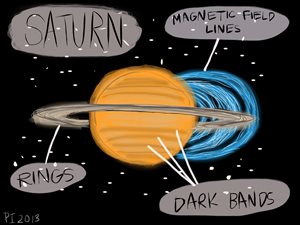Playing is Learning
The Rings of Saturn
January 3rd, 2015
| Ads | ||
|
Play the Challenge
|
||
|
A New Word is Coined A new Character is revealed A new Game is Afoot |
An Edutainment Adventure Based on Three Rounds of Investigations
|
|
|
Welcome to the World of PROFESsee™by seeCOSM™ PROFESsee™ is my title. I am the perpetual learner, in pursuit of knowledge, wisdom and truth. I derived my name from professor |
 |
|
|
Have you ever wondered what these rings are made of or how they look like? They are made of numerous tiny particles that are of different sizes that orbit around Saturn. These articles are actually made of water ice and a slight trace of rocky material. Saturn’s Rings, six main ones at least, are some of the greatest marvels of Mother Nature. They make this planet the most mesmerizing of all the planets, yes, even better than mother earth, that is, if you are not mesmerized by the evil destructive nature of the weakest two-footed creature called man that uses its wit and technology to destroy that which they cannot build. But I digress. There is no solid agreement as to how they are formed up to now but some ring features show that some of the rings were recently formed. Some theories claim that they were formed early in the history of Solar System. The rings are not visible from the earth without aided vision although their reflection increases the planet’s brightness. Galileo Galilei was the first person to see the rings using a telescope, back in the year 1610. However, it was impossible to tell their true nature, as he could not see them clearly. The rings were in 1655 described as a disk surrounding Saturn by Christian Huygens. Most people think Saturn’s rings are made of many small rings. This is not so. The rings are annular disks with concentric local maxima and minima in density and brightness. It is interesting to note the many gaps in the rings where density falls sharply. Two of the gaps are opened by moons embedded within them. Others are at locations that destabilize orbital resonances with Saturn’s moons. There is no explanation given for the other gaps today. Perhaps there will be in future. The responsibility of rings that stabilize resonances is to ensure longevity of several rings, for example, the Titan Ringlet and the G Ring. Finally, we have a ring known as Phoebe ring. It is tilted at an angle of 27 degrees to the other rings. Can you Assemble Saturn's Rings? Image courtesy of: http://blogs.discovermagazine.com/visualscience/2013/04/20/saturn-gets-drenched-by-its-eroding-rings/#.UpNsw9xmiSo |
||
Latest News / Events
E-mail [email protected]
The Professee™ Newsletter Beta
http://www.seecosm.com/
http://www.seecosm.com/

